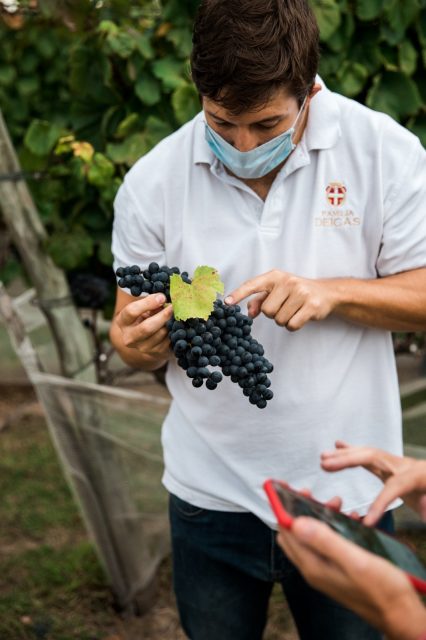This website uses cookies so that we can provide you with the best user experience possible. Cookie information is stored in your browser and performs functions such as recognising you when you return to our website and helping our team to understand which sections of the website you find most interesting and useful.
Vintage 2022 in Uruguay: A cool return to classic Uruguay
Uruguay’s winemakers are reporting that their new 2022 wines in the cellar reflect a cool vintage— offering a return to more classic Uruguayan vintages. Freshness is at the fore and 2022 looks particularly promising for coastal white wines.

“Apart from some very high temperatures in January, we had a very cool summer with high rainfall,” explains Santiago Deicas, winemaker at and uanicowith vineyards spread across the country. “The cool temperatures and higher humidity were really excellent for many of our white varieties, with Chardonnay and Albariño standing out this year, as well as Pinot Noir.”
Gabriel Pisano of Viña Progreso is also excited about the quality of Pinot Noir in particular this year: “Tasting everything now in the cellar I can definitely say it was a really fantastic year for white wines, but I’m really excited about Pinot Noir this year.” There are some nice surprises with the reds too, he adds: “We had to rethink during the middle of the harvest and return to a more ‘classic’ Uruguay profile in red wines this year. Our Tannat wines are fresher and lighter in colour [than recent vintages], but with tension and minerality.”
Uruguay’s winemakers are used to changeable vintages, although recent vintages have seen increased dry spells most notably with the blockbuster 2018 and 2020 vintages. 2022 on comparison is being considered a more classic vintage, which saw winemakers and agronomists flex their skills in the vineyard with extra canopy management. Although the extra rainfall was no cause for alarm in this maritime wine country, in which 1,200mm is the annual rainfall.
“It was a slightly more demanding vintage for Uruguay overall, but we had the great advantage of our well-draining terroir in Maldonado,” says German Bruzzone, winemaker at Bodega Garzónwhere the poor, granite soils sometimes require additional irrigation in dry vintages. “2022 is a year for fresher red wines with lower alcohol levels, and authentically Uruguayan in this sense.”
Even winemakers with vineyards in heavy soils have found ways around the sometimes wetter vintages, ranging from drainage channels to special ‘raincoats’. “In our Progreso vineyard in Canelones, we protect the soil with nylon sheets to reduce water absorption,” adds Santiago Deicas, speaking about his oldest vines of Tannat in Canelones. “We actually benefited from the cooler temperatures this year, and we have some really exceptional Tannat and Cabernet Franc in the cellar from 2022.”
Uruguay is South America’s second smallest country but fourth largest producer, producing up to 1 million litres of wines a year according to the National Viticulture Institute, Official statistics on the 2022 vintage are not yet available, but wines are expected to hit the international market by early 2023.
Amanda Barnes is The Drinks Business regular South America correspondent and author of The South America Wine Guide
Related news
Groupe Bollinger appoints new deputy CEO

